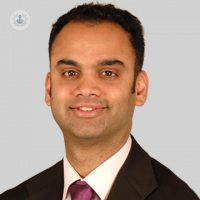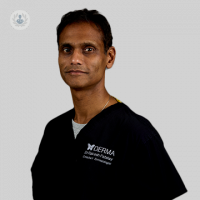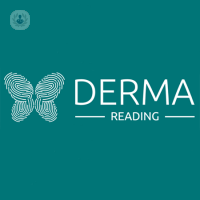What is Mohs surgery?
Mohs surgery is an innovative surgical technique used to treat skin cancers. Thin layers of skin that contain cancer are removed and examined until cancer-free tissue remains. This is done without damaging the healthy tissue. The procedure is named after American surgeon Dr Frederich Mohs who pioneered the technique.
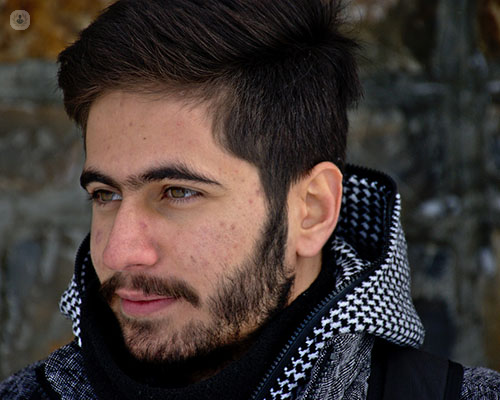
Why is Mohs surgery performed?
Mohs surgery is used to treat the most common skin cancers, basal cell carcinoma and squamous cell carcinoma, and some other types of melanoma. It is performed because:
- The minimum possible tissue is to be removed
- The tumour is to be removed completely before sewing
- There is a scar or there has been previous radiation treatment
- The cancer was already treated and not fully removed and/or has returned
- The cancer is in an area where as many healthy tissues as possible are to be preserved – around the eyes, ears, nose, mouth, hands, feet and genitals
- Borders are hard to define
- The patient's immune system does not respond well to cancer treatments or medications that they are already undergoing
What happens during Mohs surgery?
Before a tumour is removed, all of the affected tissue is analysed, which includes the bordering areas. Performed under local anaesthetic, the surgeon uses a scalpel to remove any visible cancer and a thin layer of skin surrounding the tumour.
The tissue that has been removed is processed in a laboratory, which can take up to one hour, as the patient stays in a waiting room. If the doctor finds cancer cells another layer of skin will be taken off. This process continues until all of the roots of the cancer are removed.
The precise removal of cancer through Mohs surgery means that as much healthy tissue as possible is saved and it minimises the aesthetic reconstruction required after surgery. Mohs surgery can be a long process since each stage must be carefully examined. Once the surgeon is happy that all of the cancerous cells have been removed they will discuss how to reconstruct the wound.
How to prepare for Mohs surgery
The measures taken before Mohs surgery are:
- Do not take certain types of medications - such as anticoagulants
- No smoking
- Bring a companion – the patient will need someone to drive them home
What is postoperative care like after Mohs surgery?
Mohs surgery is done as a day case, which means that the patient can go home following the procedure. If the area that was treated was only small then it would have been covered with a dressing. This needs to be left in place to protect the wound and to stop any bleeding. In bigger areas, there may be:
- Stitches
- Skin grafts (covering the wound with skin from another part of the body)
- Skin flaps (the wound is covered with the surrounding skin)
Once the local anaesthetic has worn off, it may be painful. It is recommended to take over the counter pain relief medication (Paracetamol). There may be bruising or swelling around the area, which will ease in a few days. If there are any stitches then the patient will need to return to the hospital or see their GP to have them removed.
11-05-2015 11-10-2023Mohs surgery
Dr Kapil Bhargava - Dermatology
Created on: 11-05-2015
Updated on: 11-10-2023
Edited by: Conor Lynch
What is Mohs surgery?
Mohs surgery is an innovative surgical technique used to treat skin cancers. Thin layers of skin that contain cancer are removed and examined until cancer-free tissue remains. This is done without damaging the healthy tissue. The procedure is named after American surgeon Dr Frederich Mohs who pioneered the technique.

Why is Mohs surgery performed?
Mohs surgery is used to treat the most common skin cancers, basal cell carcinoma and squamous cell carcinoma, and some other types of melanoma. It is performed because:
- The minimum possible tissue is to be removed
- The tumour is to be removed completely before sewing
- There is a scar or there has been previous radiation treatment
- The cancer was already treated and not fully removed and/or has returned
- The cancer is in an area where as many healthy tissues as possible are to be preserved – around the eyes, ears, nose, mouth, hands, feet and genitals
- Borders are hard to define
- The patient's immune system does not respond well to cancer treatments or medications that they are already undergoing
What happens during Mohs surgery?
Before a tumour is removed, all of the affected tissue is analysed, which includes the bordering areas. Performed under local anaesthetic, the surgeon uses a scalpel to remove any visible cancer and a thin layer of skin surrounding the tumour.
The tissue that has been removed is processed in a laboratory, which can take up to one hour, as the patient stays in a waiting room. If the doctor finds cancer cells another layer of skin will be taken off. This process continues until all of the roots of the cancer are removed.
The precise removal of cancer through Mohs surgery means that as much healthy tissue as possible is saved and it minimises the aesthetic reconstruction required after surgery. Mohs surgery can be a long process since each stage must be carefully examined. Once the surgeon is happy that all of the cancerous cells have been removed they will discuss how to reconstruct the wound.
How to prepare for Mohs surgery
The measures taken before Mohs surgery are:
- Do not take certain types of medications - such as anticoagulants
- No smoking
- Bring a companion – the patient will need someone to drive them home
What is postoperative care like after Mohs surgery?
Mohs surgery is done as a day case, which means that the patient can go home following the procedure. If the area that was treated was only small then it would have been covered with a dressing. This needs to be left in place to protect the wound and to stop any bleeding. In bigger areas, there may be:
- Stitches
- Skin grafts (covering the wound with skin from another part of the body)
- Skin flaps (the wound is covered with the surrounding skin)
Once the local anaesthetic has worn off, it may be painful. It is recommended to take over the counter pain relief medication (Paracetamol). There may be bruising or swelling around the area, which will ease in a few days. If there are any stitches then the patient will need to return to the hospital or see their GP to have them removed.
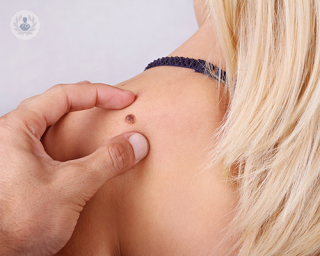

All you need to know about Mohs surgery
By Dr Jibu Varghese
2025-01-28
In our latest article, esteemed consultant dermatologist, Dr Jibu Varghese, provides an expert overview on all things Mohs surgery, including a detailed explanation of what exactly the surgery is, how long it typically lasts, and the main advantages and disadvantages of Mohs surgery. See more
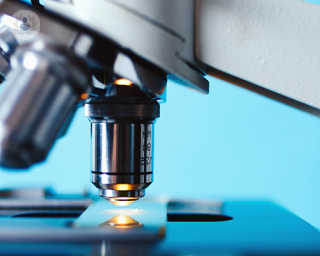

Mohs surgery: what to expect
By Dr Dev Shah
2025-01-28
Mohs surgery - an answer for cancer! Did you know carcinomas are among the most common cancers in the world? Learn what to expect from mohs micrographic surgery. See more
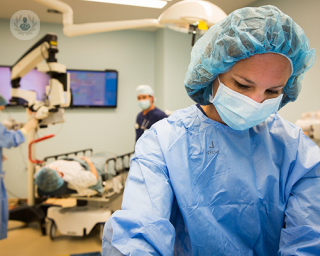

Understanding Mohs surgery: A comprehensive guide
By Miss Charlotte Defty
2025-01-28
Mohs surgery is an invaluable technique in treating certain skin cancers and ensuring effective removal while preserving healthy tissue. In her latest online article, renowned consultant reconstructive and plastic surgeon Miss Charlotte Defty delves into the most commonly asked questions surrounding Mohs surgery. See more


An expert's guide to Mohs surgery
By Dr Waseem Bakkour
2025-01-28
In his latest online article, renowned consultant dermatologist and dermatological surgeon Dr Waseem Bakkour explains Mohs surgery, a highly successful treatment for skin cancer. See more
Experts in Mohs surgery
-
Dr Raj Mallipeddi
DermatologyExpert in:
- Cosmetic dermatology
- Surgical dermatology
- Skin cancer
- Mohs surgery
- Laser
- Photodynamic therapy
-
Dr Saqib Jawaid Bashir
DermatologyExpert in:
- Mohs surgery
- Laser
- Cosmetic dermatology
- Skin cancer
- Scars
- Acne
-
Dr Kapil Bhargava
DermatologyExpert in:
- Skin cancer
- Alopecia
- Moles
- Dermoscopy
- Mohs surgery
- Cosmetic dermatology
-
Dr Rakesh Patalay
DermatologyExpert in:
- Basal cell carcinoma
- Dermal fillers
- Laser Surgery
- Mohs surgery
- Psoriasis
- Skin cancer on face
-
Miss Rakhee Nayar
Plastic surgeryExpert in:
- Mohs surgery
- Skin cancer
- Facial reconstruction
- Skin lesions
- Skin cancer on face
- Basal cell carcinoma
- See all

OneWelbeck Skin Health & Allergy
OneWelbeck Skin Health & Allergy
1 Welbeck St, London, W1G 0AR
No existe teléfono en el centro.
By using the telephone number provided by TOP DOCTORS, you automatically agree to let us use your phone number for statistical and commercial purposes. For further information, read our Privacy Policy
Top Doctors

Derma Reading
Derma Reading
Shepherds Hill, Woodley, RG6 1FE
No existe teléfono en el centro.
By using the telephone number provided by TOP DOCTORS, you automatically agree to let us use your phone number for statistical and commercial purposes. For further information, read our Privacy Policy
Top Doctors

Guy’s and St Thomas’ Private Healthcare
Guy’s and St Thomas’ Private Healthcare
Guy’s Hospital, Great Maze Pond
No existe teléfono en el centro.
By using the telephone number provided by TOP DOCTORS, you automatically agree to let us use your phone number for statistical and commercial purposes. For further information, read our Privacy Policy
Top Doctors
-
OneWelbeck Skin Health & Allergy
1 Welbeck St, London, W1G 0AR, W1G Marylebone LondonExpert in:
- Allergy Dermatitis
- Allergy
- Skin Cancer
- Dermatitis
- Dermatology
- Clinical Dermatology
-
Derma Reading
Shepherds Hill, Woodley, RG6 1FE, ReadingExpert in:
- Acne
- Skin Cancer
- Paediatric Dermatology
- Moles
- Aesthetic Medicine
- Hair loss
-
Guy’s and St Thomas’ Private Healthcare
Guy’s Hospital, Great Maze Pond, SE1 South Bank LondonExpert in:
- Allergy
- Cardiology
- General Surgery
- Maxillofacial Surgery
- Thoracic Surgery
- Maternity care
- See all
- Most viewed diseases, medical tests, and treatments
- Immunotherapy
- Facial feminisation surgery
- Migraine
- Autoimmune diseases
- Endermologie
- Polynucleotides
- Head and neck cancer
- Neck lump
- Acellular dermal matrix (ADM)
- Prepectoral breast reconstruction

